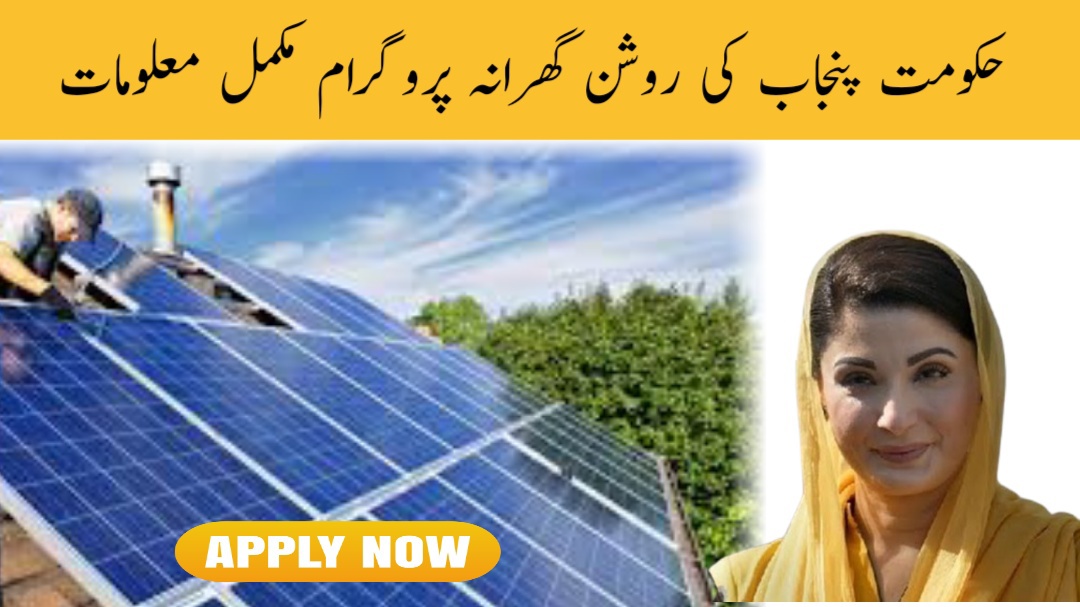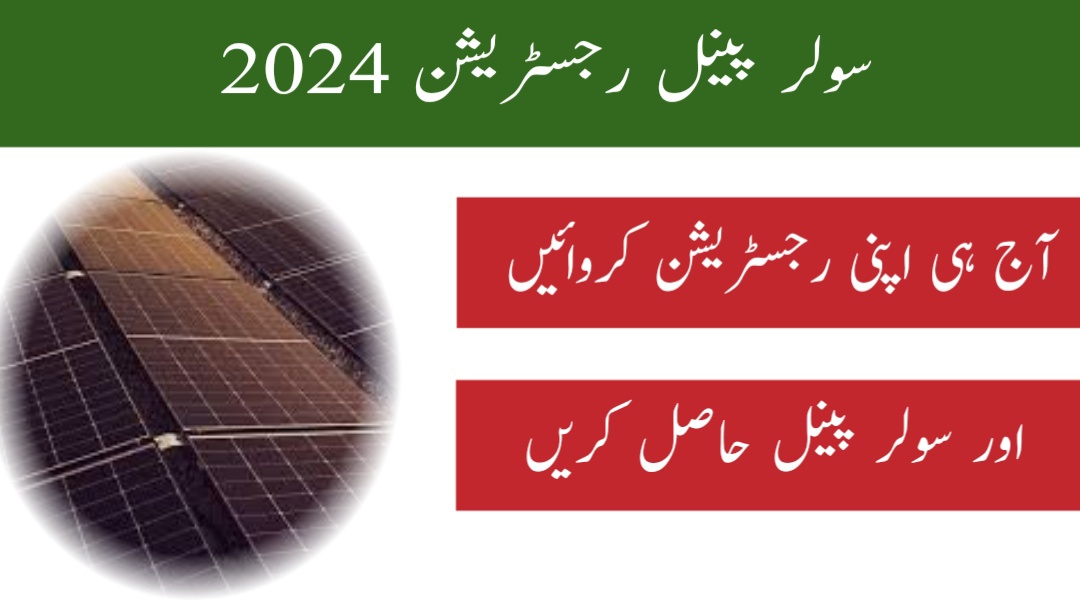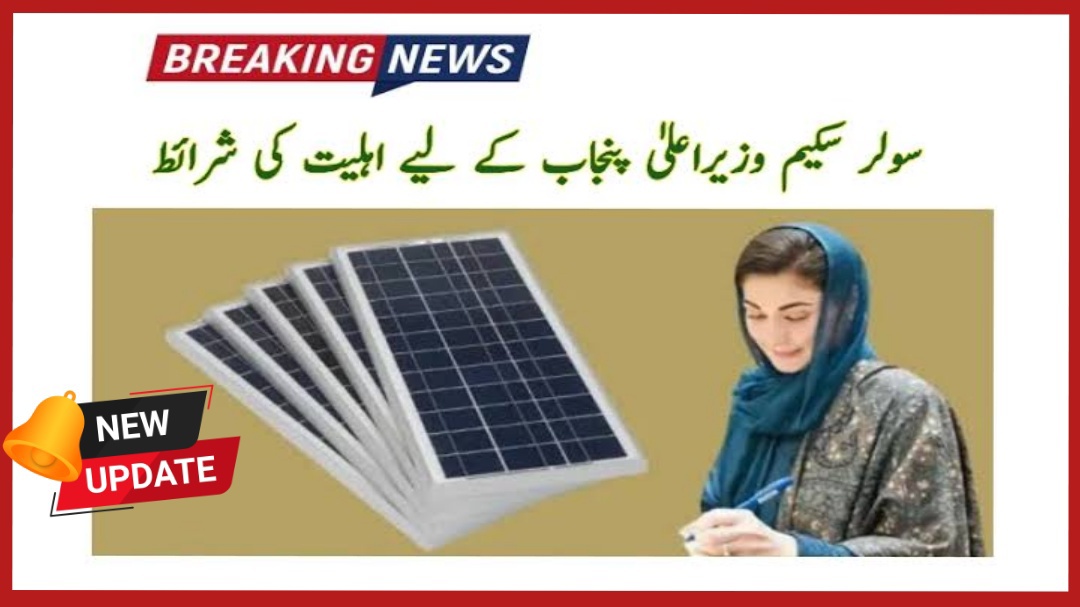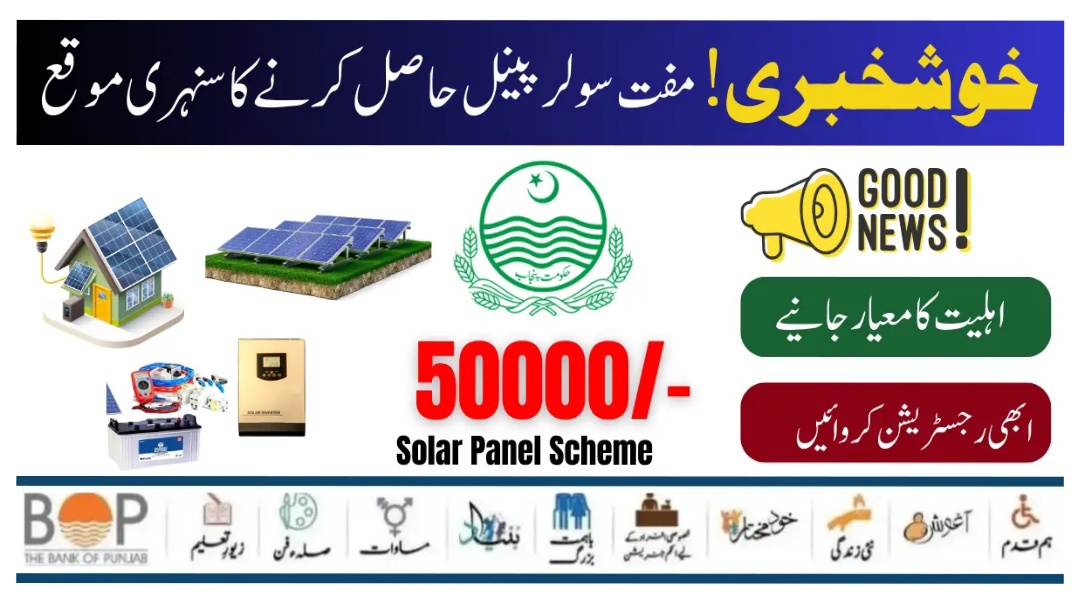Maryam Nawaz Sharif, the Chief Minister of Punjab, recently announced the launch of the Punjab Solar Scheme, which will provide free solar systems to deserving and impoverished families throughout the province. This initiative, also known as the Roshan Gharana program, will include two solar panels, batteries, an inverter, wires, and other necessary items. Please read this article to find out who is eligible to apply for and receive a solar system under the Punjab government’s recently announced scheme.
Punjab Free Solar Scheme Background
| Criteria | Details |
|---|---|
| Monthly Electricity Consumption | Households using between 50 to 500 units per month. |
| Monthly Income | Rs 50,000 or less. |
| Residency and Citizenship | Must be a resident of Punjab and possess a Pakistani identity card. |
| Additional Requirements | Poverty score of 32 or less, no existing solar system, not a bank borrower, not involved in illegal activities like electricity theft. |
This table provides a concise overview of the main eligibility requirements for families to apply for and receive a solar system under the Punjab government’s recently announced scheme.
The Chief Minister of Punjab announced a solar system scheme two to three months ago, providing free solar systems to 50,000 protected consumers in the Punjab region. The scheme was initially intended to provide these systems to those who used up to 100 units of electricity per month. However, the June electricity bills have caused concern, leading to changes in the scheme. Instead of 50,000 protected users, 45 lakh users will receive solar systems, ranging from 50 to 500 units. This change aims to provide relief to those struggling with heavy electricity bills and promote renewable energy in Punjab.
Eligibility Criteria for the Punjab Solar Scheme

The Punjab Solar Panel Scheme, launched by the Chief Minister of Punjab, is open to poor and deserving households. Eligibility criteria include electricity consumption between 50 and 500 units per month, monthly income of Rs 50,000 or less, an identity card to prove Pakistani citizenship and residence in Punjab, being a Punjabi citizen, having a poverty score of 32 or less, not having solar systems in their house, not being bank borrowers, and not being involved in illegal activities such as electricity theft. The scheme is mandatory for beneficiaries to be Punjab residents, and applicants must not already have solar systems in their homes. The scheme is provided in easy installments of five years.
Priority Groups In Start Of Scheme
The scheme aims to provide solar systems to poor families, freeing them from heavy electricity bills. The first phase will focus on providing solar systems to the poorest families, while the second phase will target middle-class families. The solar panel prices are divided into two parts: government support and consumer support. The government will initially pay 90% of the total amount, while consumers will pay the remaining 10%. The remaining amount will be deposited in easy 5-year installments after the consumer receives the solar system. The scheme’s wide scope will ensure that the most deserving families receive the most solar panels.
Registration Process

The Punjab government has not yet formally begun accepting registrations for the Punjab Solar Scheme. However, preliminary information indicates that the registration procedure will be carried out via the designated banks selected by the Punjab government, with the Bank of Punjab being the most prominent. Additionally, you will be completely notified of all the facts on this same website as soon as any kind of information is made public in this regard. for the aspirational families to easily complete their registration and have access to the solar system.
Conclusion
The Punjab government has taken a significant step in supporting renewable energy and helping those who are struggling with high electricity bills by implementing the Punjab Solar Scheme. The Punjab government’s first and most crucial objective is to guarantee that low-income and eligible people have access to solar systems by initially covering 90% of the system’s entire cost. Aspirants who fulfill the eligibility requirements will soon be able to finish their registration and receive a solar system, helping to secure a bright and sustainable future. To remain completely informed about the solar panel system, return often to our website.





















